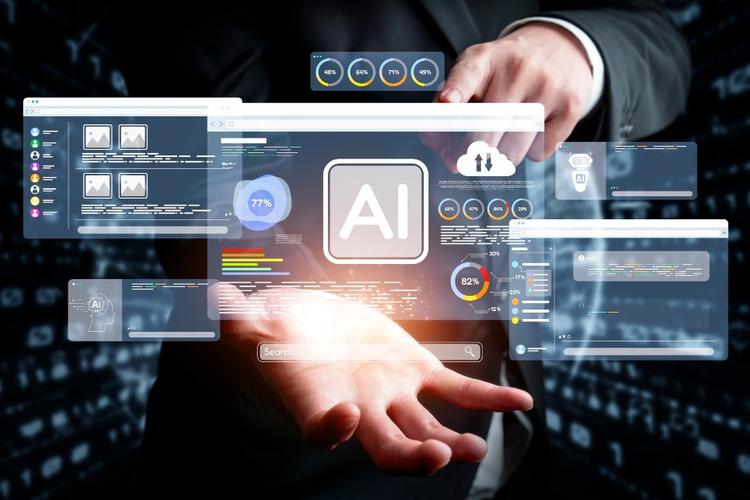Bridging Today’s Web to the Semantic Future with Samesurf’s Agentic AI
November 11, 2025

Samesurf is the inventor of modern co-browsing and a pioneer in the development of core systems for Agentic AI.
The global competitive landscape is being reshaped by the rise of Agentic AI. These autonomous systems that are capable of complex planning and goal-driven execution offer the potential for immediate, substantial efficiency gains across enterprise workflows. However, deploying these sophisticated agents is complicated by the foundational architecture of the World Wide Web, which was built for human use rather than machine autonomy. Closing this strategic gap requires an intermediate, architecturally robust solution. Visual and simulation technologies, exemplified by Samesurf, provide the governed, scalable foundation that is necessary to unlock agentic value today and bypass the long timeline required for universal web standardization.
The Disparity Between Agentic Ambition and Web Reality
The path to fully autonomous digital operations is constrained by a critical timeline conflict. While the vision of a machine-readable internet is clear, commercial pressure for immediate automation demands practical, real-world deployment today.
The World Wide Web Consortium long ago outlined the Semantic Web, or Web 3.0, representing a shift from the traditional “Web of documents” to a “Web of data.” This paradigm seeks to establish a common framework for sharing, understanding, and reusing data seamlessly across applications, enterprises, and communities. Achieving this requires a sophisticated technology stack to encode semantics directly with data, including standards such as RDF, OWL, SPARQL, JSON-LD, and SHACL. These frameworks allow computers to reason over information and integrate heterogeneous data sources, providing deep interoperability essential for managing complex information landscapes.
To operationalize this vision, a new discipline known as Agent Interface Optimization (AIO) is emerging. AIO focuses on making business data and functions explicitly legible for AI-enabled agents by emphasizing structured data and efficient API endpoints rather than content-centric metrics.
Despite its technical promise, the universal adoption of Semantic Web standards remains slow. Large enterprises have leveraged these technologies for internal integration and knowledge management, but standardization across the broader web remains limited. Guidance for AI optimization often remains basic, such as ensuring bots and LLMs are not blocked, leaving a largely unstructured web environment.
At the same time, market demands for immediate efficiency are accelerating the adoption of autonomous systems. Organizations are moving beyond rigid, rule-based Robotic Process Automation (RPA) to Agentic Process Automation (APA). Autonomous agents powered by Generative AI and LLMs can plan, make context-aware decisions, and execute complex, multi-step workflows without continuous human supervision.
This shift delivers measurable business value and is reshaping operational practices. The urgency for immediate efficiency that is measured in quarterly performance cycles, stands in stark contrast to the slow, multi-decade timeline required for global Semantic Web standardization. Organizations that wait for a fully standardized web risk losing critical competitive advantages. The component that is required is a bridging technology that operates robustly and securely on the existing human-centric web while unlocking the full potential of AI-enabled agents today.
The Fragility of the Visual Web
The current World Wide Web, dominated by dynamic graphical user interfaces (GUIs) and lacking standardized semantic tags, is fundamentally hostile to autonomous agents. The need for agents to interact directly with these visual structures introduces significant, often underappreciated, security vulnerabilities.
Traditional web automation relied on rigid scripting and DOM parsing. While effective in controlled environments, these methods are fragile and break at minor changes to a website’s layout or workflow. They also lack adaptability, as scripts can only execute fixed instructions and cannot reason about unexpected contextual changes.
LLM-powered AI agents attempt to overcome this rigidity but still face cognitive failure modes on web systems designed for humans. They struggle to maintain consistency across multi-step tasks, often failing to follow detailed navigational instructions or verify task completion. Complex workflows involving multiple agents exacerbate these challenges, as agents lack the contextual understanding that humans naturally bring to interactions.
Since the web is visually optimized, an agent’s main bottleneck is interpreting the GUI. In the absence of a machine-readable data layer, the agent must simulate human perception to understand visual context and determine the correct sequence of actions. Without this robust visual interpretation layer, agents remain tethered to fragile instructions or fail when encountering dynamic, unstandardized interfaces.
Autonomous interaction also introduces new security risks. As agents proliferate, they generate predictable digital fingerprints, browser attributes, automation framework signatures, and network characteristics that make them identifiable as a distinct class of web traffic. Malicious actors can exploit this predictability through website cloaking by serving agents a visually identical page embedded with hidden instructions, such as indirect prompt injections, while humans see a benign interface.
This leads to invisible hijacking: compromised agent behavior, including data exfiltration or misinformation propagation, that occurs without detection by human supervisors who only see the standard page. Client-side execution expands the attack surface and introduces severe architectural vulnerabilities, which makes it unsuitable for enterprise-grade autonomous tasks. Security for Agentic AI must therefore be intrinsic to the architecture itself, not an observational or post-deployment add-on.
Samesurf’s Cloud Browser
To address the urgent need for scalable Agentic AI deployment and the technical fragilities of the current web, a purpose-built architectural foundation is required. Samesurf’s patented cloud browser technology provides this foundation and enables secure, autonomous interaction with human-centric web infrastructure.
Samesurf employs a Governed Cloud Browser architecture – a virtualized, server-side environment where AI agent operations are fully isolated. This relocation of execution away from the host device creates a digital air gap and prevents malware, rogue scripts, or unintended code from impacting local enterprise networks or endpoints. This isolation fundamentally mitigates the External Integration Risk inherent in autonomous web interactions.
At the core of Samesurf’s solution is the agent’s ability to actively interact with the visual web. The patented system integrates a cloud browser, synchronization server, and/or encoder to create a closed-loop system for perception and action. Within this controlled perimeter, the AI agent can simulate human behaviors while remaining fully observable. This visual intelligence allows the agent to perceive and manipulate GUIs robustly thereby circumventing the fragility of fixed scripting and the absence of universal AIO standards.
The strategic value of Samesurf’s visual simulation lies in combining enterprise-grade governance and security with immediate, zero-friction deployment on existing infrastructure. This architecture enables organizations to capture the ROI of autonomous agents without waiting for the Semantic Web or risking the vulnerabilities of unmanaged client-side execution. The visual simulation layer is not a temporary workaround; it provides a durable, secure foundation that accelerates enterprise automation readiness and supports scalable, responsible Agentic AI adoption.
Transforming Autonomous Risk into a Trusted Asset
For Agentic AI to move from pilot projects to secure, scalable production systems, trust and intrinsic accountability must be built into the architecture. Autonomous systems introduce complex liability considerations that demand real-time traceability and compliance assurance. Agentic AI represents a critical operational departure from traditional automation. Whereas conventional systems were accountable only for final outputs, Agentic AI carries responsibility across every intermediate step. Managing this diffusion of causality in high-stakes, multi-step workflows is an architectural imperative. Samesurf addresses this need through comprehensive transparency by establishing a continuous traceability framework. Persistent interaction recording captures every agent action, along with prompts, internal states, and decision processes, as non-repudiable events. This verifiable record converts the inherent complexity of autonomous action into an auditable, trustworthy operational asset.
The cloud browser provides intrinsic compliance through isolation and data management policies. By executing workflows remotely, the platform ensures that no data from the user’s host device is exposed, which reduces the attack surface and enables an immediate “kill switch” if anomalous behavior occurs. Data minimization is enforced rigorously: no session information is stored or retained beyond the active session that aligns with global privacy standards such as GDPR. For regulated sectors, including finance, insurance, and healthcare, the architecture incorporates specialized compliance tools that render high-risk transactions transparent and defensible. Features such as element redaction and input field blocking automatically protect sensitive content (e.g., credit card numbers, Social Security Numbers) during interactions. By meeting standards including SOC 2 Type 2, HIPAA, and ISO 27001, the platform ensures robust security and operational compliance in high-stakes workflows.
Autonomy in complex or novel scenarios also demands structured human governance. Samesurf enables Human-in-the-Loop supervision through patented mechanisms that allow instant transfer of control to a human operator upon detection of anomalous behavior. Real-time control passing lets humans intervene without losing context or exposing sensitive data. This collaborative model preserves workflow continuity by allowing an agent to attempt resolution and, if necessary, seamlessly escalate to a human expert. By embedding transparency, governance, and compliance directly into the architecture, Samesurf addresses the primary barrier to enterprise adoption of Agentic AI: trust. The platform converts the operational and regulatory risks of autonomous systems into a secure, auditable foundation, thereby enabling organizations to deploy AI at scale safely and confidently.
Defining the Path to an Agent-Ready Enterprise
The ultimate vision of the Semantic Web, where universal standardization enables agents to natively read and process data, remains an inevitable but distant technological ideal. The economic reality, however, demands that the efficiency, adaptability, and cost savings offered by Agentic AI be realized today. Samesurf’s visual and simulation technology provides more than a temporary workaround; it is a mature, architecturally critical solution that bridges the gap between the current human-centric web and the autonomous future. By creating a fully observable, secure, and isolated execution environment, the platform addresses both the technical fragility and the deep security vulnerabilities that arise when deploying cognitive agents on today’s web.
The future of web interaction will not emerge from a single breakthrough, but from a spectrum of interconnected layers of autonomy. Enterprise strategies must account for and secure each layer to maintain a cohesive and compliant automation framework. Leaders in technology and digital strategy face a clear mandate: deploying Agentic AI safely and effectively requires foundational systems that actively safeguard Visual Simulation and Human-in-the-Loop today. By adopting platforms that embed intrinsic accountability, auditability, and compliance controls, organizations can move beyond the rigid, rule-bound operations of RPA and unlock the independent goal execution capabilities of true Agentic AI. This approach transforms the inherent risks of autonomous operations into a defensible, high-ROI operational asset that continuously improves, ultimately ensuring enterprises remain competitive in the rapidly evolving era of autonomous systems.
Visit samesurf.com to learn more or go to https://www.samesurf.com/request-demo to request a demo today.


